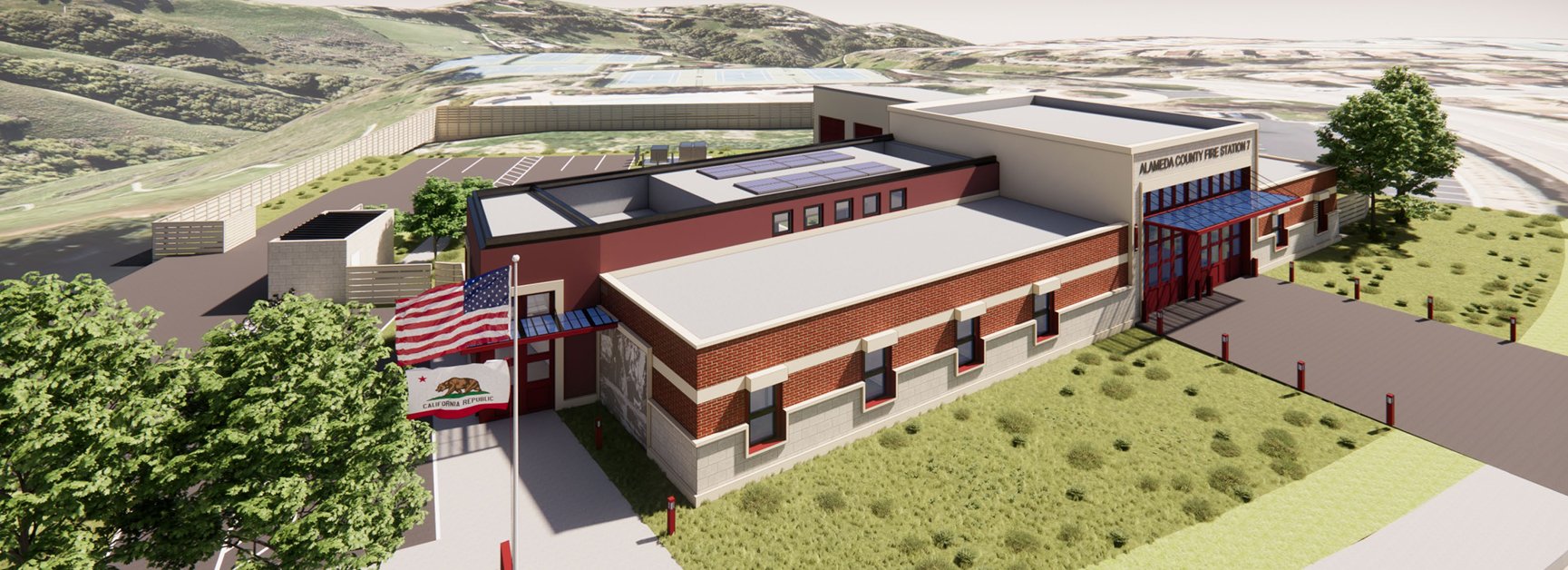CV MAC Reviews Fire Department Upgrade Plan
At last week’s Castro Valley Municipal Advisory Council (MAC) meeting, the council heard an update from the Alameda County Fire Department on the spending from Measure X. They also heard from County staff about the Community Climate Action Plan.
Measure X is a 2020 $90 million, 30-year general obligation bond for repairing and replacing out-of-date fire stations and equipment. Assessed at 1.6 cents per $100,000 of assessed home value, it costs the average Alameda County homeowner about $142 a year.
Eric Moore, ACFD Deputy Chief of Communication and Support, presented to the MAC about upgrades to Station 7 and Station 25 in Castro Valley.
Station 7 is proposed to be completely rebuilt adjacent to the current facility on an empty plot of land at 6855 Villarreal Drive.
The new building will be one story tall and act as a replacement for the existing facility, which was originally constructed in 1986.
Station 25 is older; it was initially built in 1966 at 20336 San Miguel Avenue. Moore told the MAC that the old station doesn’t meet the ACFD’s needs for accessibility, housing, or a general facility.
The proposed 10,000-square-foot Station 25 at the exact location would be two-story housing on the top floor and fitness, locker room, and office space on the first floor.
Moore said that the ACFD will be back with another update on Measure X projects in the second quarter of 2024, with public art, design proposals, and more yet to be decided. A builder is tentatively set to be selected in October of this year, with groundbreaking and construction planned for next year.
“It’s important to show the taxpayers what they are paying for its part of Castro Valley,” said Moore. “We are looking to save costs when we can, but we are making sure to provide a fire station we are all proud of.”
The Planning Department then gave a lengthy update on the Community Climate Action Plan (CCAP) and its Safety Element amendment, a document required by the state- it was last updated about a decade ago.
The CCAP is designed to “support resilient, climate-smart unincorporated communities,” according to the County document. “From flooding to extreme heat to wildfires, natural hazards worsen as climate change intensifies.”
The county says the CCAP serves as a roadmap for reducing greenhouse gas (GHG) emissions from unincorporated areas, sets reduction targets, establishes policies, integrates adaptation and resilience strategies, considers environmental justice priorities, and provides an implementation program.
The county’s “Safety Element” is part of the County's General Plan to provide community protection. The document Identifies existing and projected hazards such as flooding, extreme heat, and wildfires. The Safety Element also considers minimizing human injury, loss of life, property damage, and economic and social dislocation. It also addresses evacuation routes.
The MAC has frequently lamented that this and similar state-mandated documents are long on regulations and language and short on actual plans and figures to make them come to fruition.
MAC member Chuck Moore thanked staff for their hard work but questioned the general methodology of state standards, which don’t directly address the Eden Area, let alone Castro Valley specifically.
For example, he questioned the phrase “promote” regarding fuel alternatives to diesel in agriculture work.
“The word ‘promote’ scares me because we are going to put that down on a piece of paper without an action behind it,” said Moore. “It sounds nice, but it isn’t really happening.”
MAC member Ken Carbone said that the document was well-intentioned but vague and not realistic in the grand scheme of things and that it has “no teeth.”
MAC member Ilya Prokopoff said, "In relation to climate change, every little bit helps,” but agreed goals should be realistically achievable.
A motion by Moore to reject the document until staff retired with a more detailed cost analysis and list of specific community priorities was approved by members Carbone and Tojo Thomas but ultimately not passed by most of the MAC.
The MAC passed a second motion to approve the plan as presented to the next stage with added financial aid motivation and geographical comparison of greenhouse gases between cities in the county.
The CCAP will now go to the Alameda County Planning Commission in April and the Board of Supervisors for approval in June.
A complete copy of the CCAP is available at choc.org/cda/planning/ccapse.

